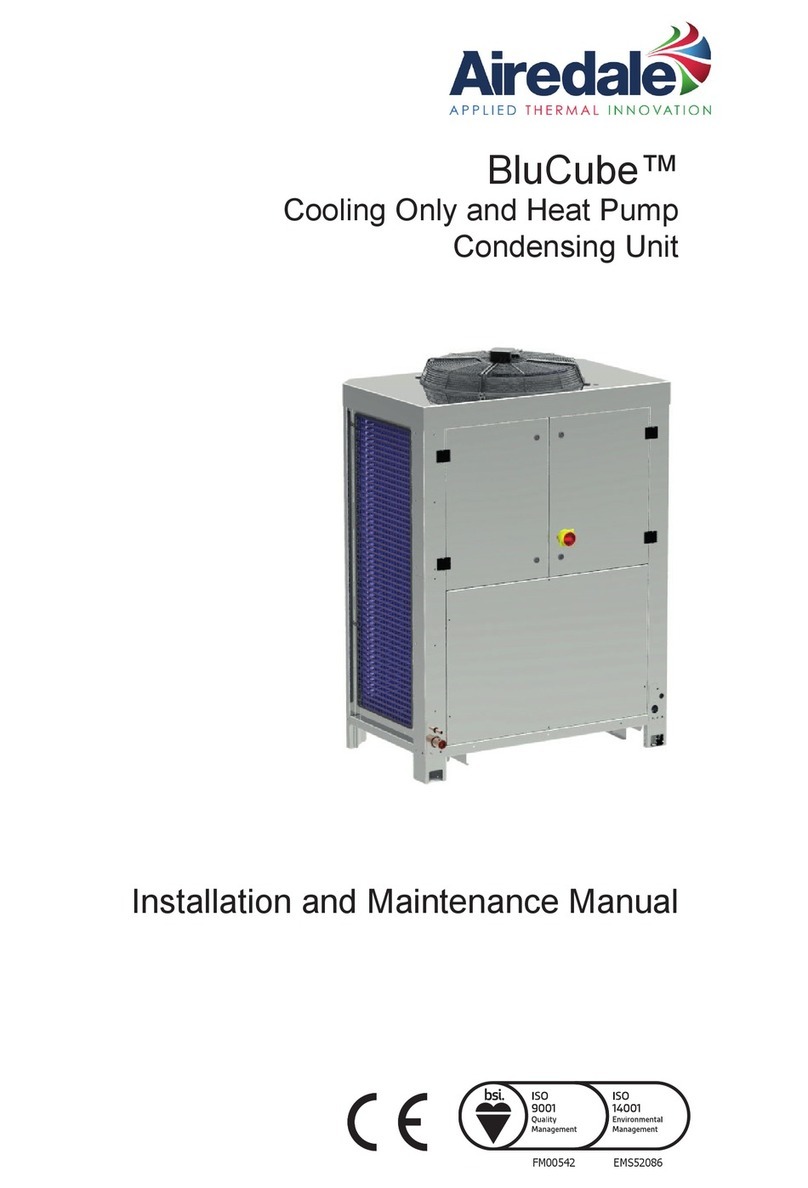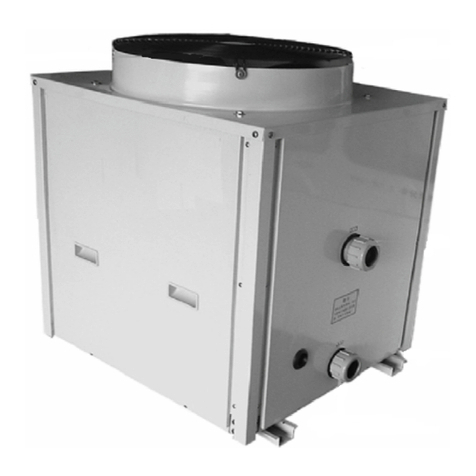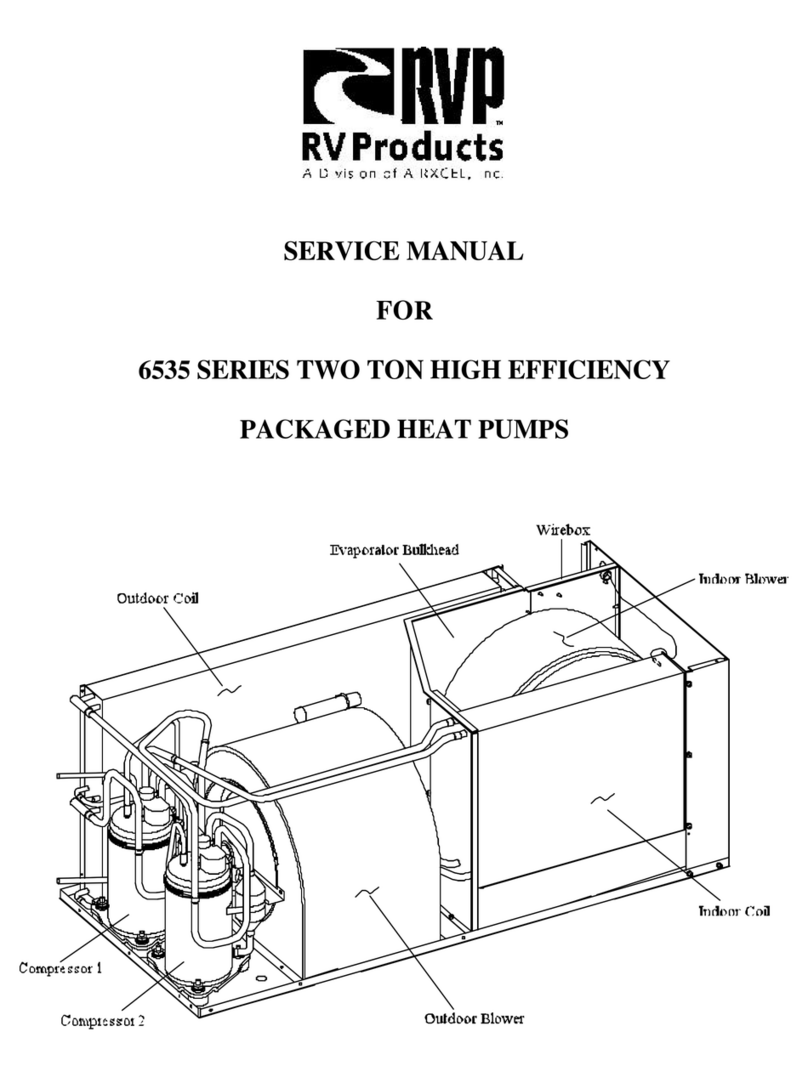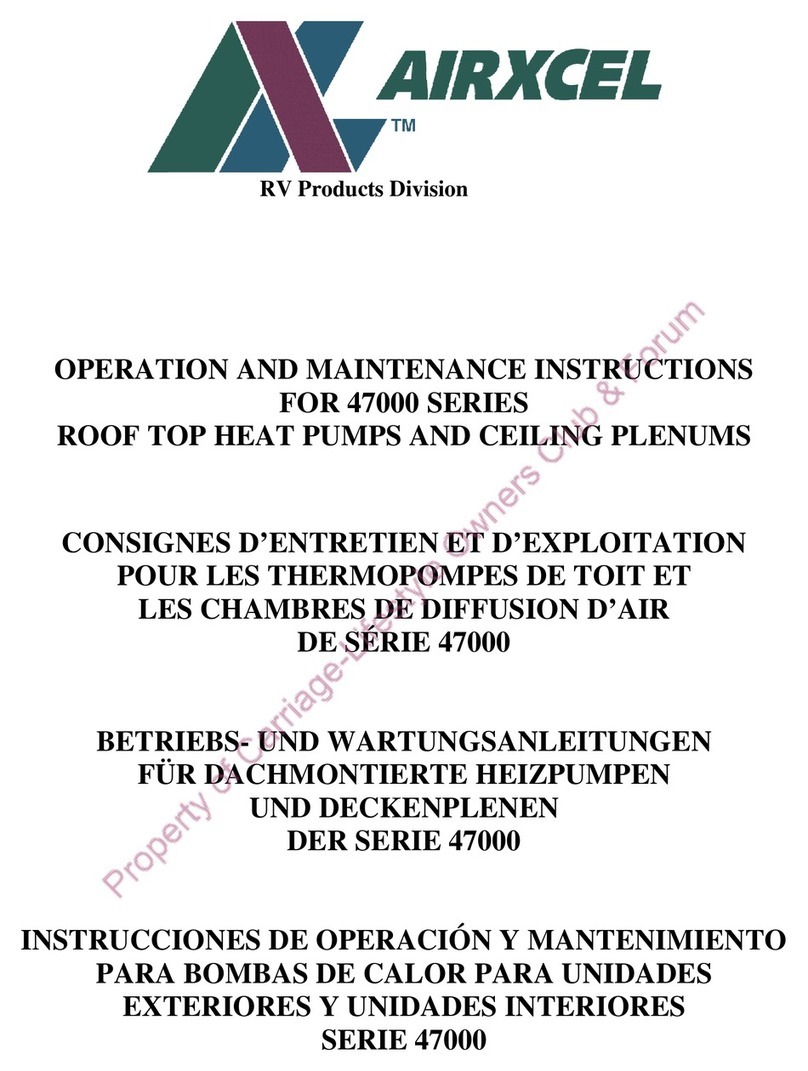
10
1. Indoor Coil (Cooling Mode)
The purpose of the finned evaporator coil is to transfer the
heat from the warm and moist indoor air to the cold low
pressure refrigerant.
As the heat leaves the air, the air temperature drops and some
of the moisture in the air condenses from a vapor to a liquid.
The liquid water (condensate) is drained onto the roof of the
recreational vehicle. As the heat enters the refrigerant in the
evaporator, it causes the refrigerant to evaporate (change from
a liquid to a vapor).
The refrigerant remains at nearly constant temperature (called
evaporator temperature or low side saturation temperature) in
the evaporator since there are both liquid and vapor together.
However, near the outlet of the evaporator coil, all of the liquid
has boiled (evaporated) away and from there on, the
temperature of the vapor rises (the vapor becomes
superheated). It is necessary that the vapor become
superheated because it is headed down the suction line to the
compressor, and the compressor can only pump superheated
vapor. Any vapor (which might be present if the vapor were
not superheated) could cause serious mechanical damage to
the compressor.
2. Suction Line
The suction line is the copper tube which carries the
superheated vapor refrigerant from the evaporator to the
compressor.
3. Compressor
The compressor is called a hermetic compressor which means
it is completed sealed (welded together). It is, therefore, not
internally field serviceable. Inside the compressor housing is
basically:
a) an electric motor which drives the compressor,
b) a pump which is designed to pump superheated
vapor,
c) a supply of special refrigerant oil. A small portion of
the oil will circulate out through the system with the
refrigerant, but will constantly return to the
compressor with the refrigerant, so the compressor
will not run out of oil.
4. Outdoor Coil (Cooling Mode)
The purpose of the finned condenser coil is to transfer heat
from the high pressure refrigerant to the warm outdoor air. As
the outdoor air passes over the coil, the heat transfer will
cause the air temperature to rise. Thus the condenser
discharge air will be several degrees warmer than the
condenser entering air.
As the refrigerant passes through the first few tubes of the
condenser, its temperature will be lowered or it will be de-
superheated. After the refrigerant is de-superheated, it will
begin to condense or change from a vapor to a liquid and will
remain at a nearly constant temperature throughout almost all
of the remainder of the coil. This temperature is called the
condensing temperature or high side saturation temperature
and will always be higher than the condenser entering air
temperature.
Near the bottom of the condenser, the refrigerant will all be
condensed to a liquid and from there on, its temperature will
drop to more nearly the temperature of the outdoor air. After
the temperature of the refrigerant drops below condensing or
saturation temperature, we call its condition sub-cooled liquid.
During all of the three processes in the condenser (de-
superheating, condensing, sub-cooling), the refrigerant gives
up heat; but most of the heat is given up during the
condensing process.
5. Reversing Valve
The reversing valves main function is to reverse the flow of
refrigerant. Internally, it is composed of two pistons on a
sliding block or cylinder with two openings. The operation of
the piston block is controlled by a solenoid valve. The
solenoid valve controls the flow of the refrigerant, which
produces a pressure difference in the valve itself. When the
solenoid valve is energized, it is in the heating mode. When it
is de-energized, it is in the cooling mode.
6. Discharge Line
The discharge line carries the refrigerant out of the compressor
and to the reversing valve. The reversing valve then
distributes this refrigerant to the outdoor coil during the
cooling mode, and to the indoor coil in the heating mode.
Remember that as the refrigerant entered the compressor, it
was superheated vapor. As the compressor works on the
refrigerant, it adds more heat and also compresses the
refrigerant into a smaller space. The refrigerant, therefore,
leaves the compressor highly superheated - so if the discharge
line is hot to the touch (burns), don’t be surprised - it should
be.
7. By-Flow Restrictor
The by-flow restrictor is the metering device for the heat
pump. The restrictor is made up of two orifices positioned
back to back. There is a space between the orifices. As the
system is either in the cooling or heating mode, it forces one of
the orifices to seat at one of the tapered ends and force the
other to break its seal. Refrigerant goes around one orifice and
through the other, establishing the pressure drop. The orifices






























